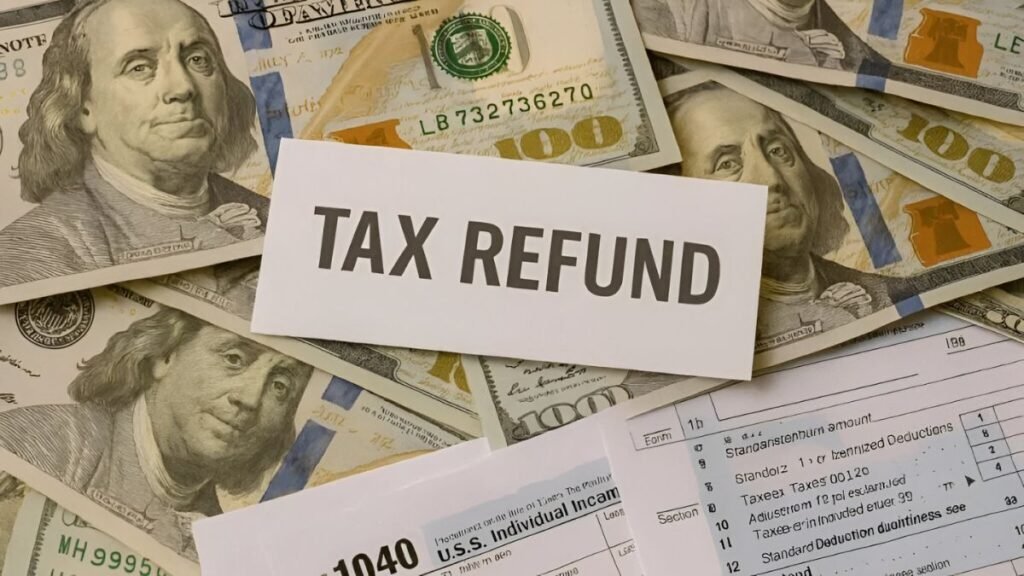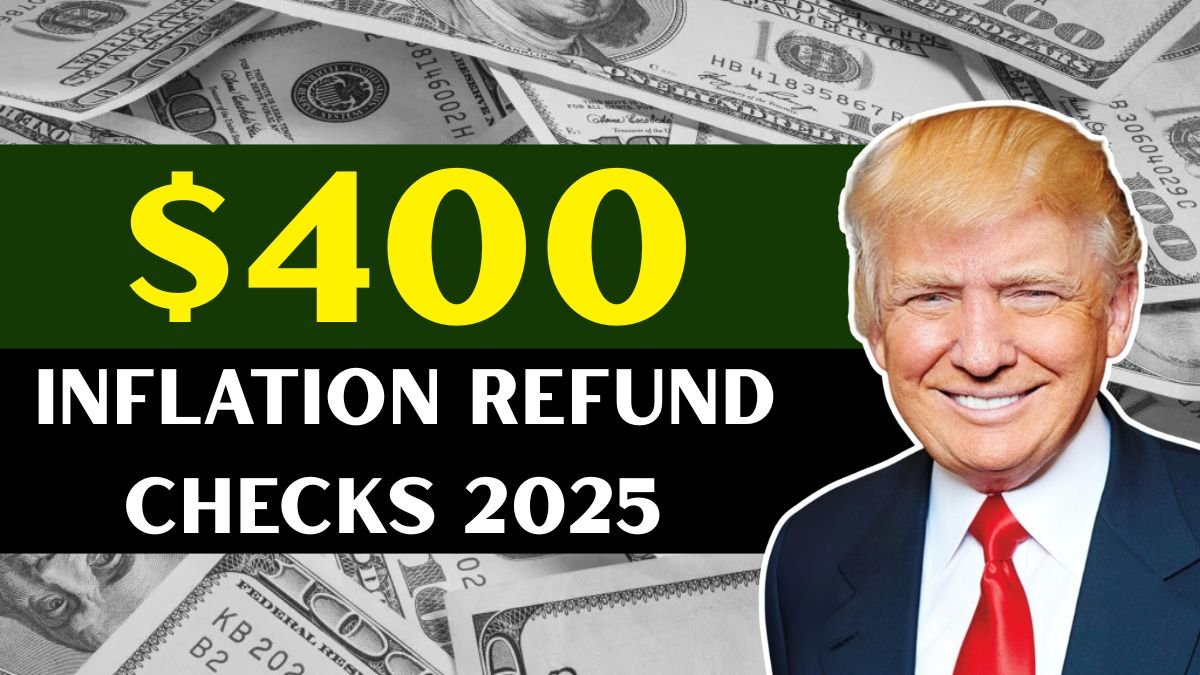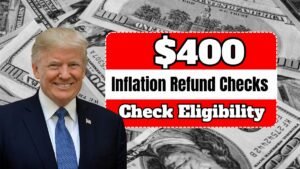$400 Inflation Refund Checks 2025: In recent years, inflation in New York has impacted the daily lives of ordinary citizens. Essential expenses like rent, fuel, electricity, and food have been steadily rising. This is why the state government launched the first-ever “Inflation Relief Check” program, providing one-time cash assistance to more than 8.2 million taxpayers to stabilize their monthly budgets and make life easier.
Due to the state’s economic policies, tax collections in the last fiscal year far exceeded expectations, resulting in a government surplus of over $3 billion.
Plan Basics: Direct Benefits to the Public from a “Surplus State”
This relief fund is being provided from New York State’s budget surplus. This not only allows the government to redistribute a portion of its tax collections back to citizens but also attempts to stimulate spending and consumption in local markets.
Experts believe that when the government provides direct financial support to families in need, it immediately benefits small businesses and revitalizes the economic lifecycle within the state.
Eligibility: Who will receive this relief check?
The eligibility rules are very clear. Only those who filed a New York State Resident Income Tax Return (Form IT-201) in 2023 will be eligible. Applicants must be full-time residents of the state for that year—those who claim part-time residence or reside in another state will not receive this assistance.
Anyone who claims to have tax records with the department will not be eligible to complete an application. If you’ve recently changed your address, it’s important to update it immediately on the tax department’s portal.
This money will generally benefit low- and middle-income groups, as higher-income earners or those with dependents will not receive this assistance.
Amount Determined: Based on Income and Filing Status

The one-time payment amount under the plan will depend on the applicant’s income and tax filing status.
- Single filers and married filing separately: If total income is $75,000 or less: $200 check.
- Single filers, income $75,000-$150,000: $150 check.
- Married filing jointly, income $150,000 or less: $400 check.
- Married, filing jointly, income $150,000–$300,000: $300 check.
- Head of Household, $75,000 or less: $200
- Head of Household, $75,000-$150,000: $150
To Claimed Dependents: No Check.
The payment amount is determined differently for each category, thus prioritizing those in need.
Distribution Process: Full Automation and Transparency
The check distribution process began in late September and is scheduled to be completed by the last week of November.
- No application or additional forms are required; the department is reviewing all eligible records manually.
- The amount will be sent directly to the address linked to your 2023 tax return.
- No tracking portal; if there are cases of mail delays, loss, or undeliverables, the reissue process will begin in December.
- If the check does not arrive on time, assistance can be obtained from a helpline.
All checks are being sent in government envelopes to prevent people from accidentally discarding them—these will be standard postal packages, with no separate packaging or letterhead.
Beware of fraud: Government warning
With such a large relief program, the risk of scams and fraud increases. Many people may pose as government or tax department officials and ask for personal information or bank details via email, calls, or messages.
The tax department has warned people: Never receive emails, calls, or SMS asking for bank or personal details. Immediately verify such messages on the department’s website or helpline, and do not click on any links or fake portals.
The Plan’s Broad Economic Impact
This relief plan is expected to achieve twofold benefits for the state government.
- First, households facing inflation will receive immediate spending relief, reducing pressure on savings.
- Second, middle-class and low-income individuals will directly spend this amount in markets—boosting consumption and business activity in the state’s fourth quarter (Q4).
In addition to distributing relief funds, the state is implementing other robust policies, such as the Child Tax Credit and tax cuts, to ensure that assistance reaches citizens.
Many experts believe that New York’s initiative could serve as a model for other states. Many state governments are now moving toward targeted relief policies instead of large stimulus plans.
Social and Policy-Level Significance
This is the first time a state government has directly distributed its surplus to citizens in the form of cash assistance. This not only reinforces a sense of social justice but also increases public confidence that the government is aware of and prioritizes citizens’ genuine concerns.
The impact of this payment is not just economic but also social—rebuilding trust and confidence in government policies among the public.
Tax and Administrative Considerations
- The relief funds will be tax-free at the state level but must be reported on federal tax returns.
- If a check is lost or not delivered on time, the department will begin the reissuance process in December.
- There is no online tracking; only a helpline is available.
- Applicants will receive benefits only if they provide complete or eligible residence records on their filed tax returns.

$147 Payment for Everyone – Cash App agrees to $12.5M settlement over spam texts class action claims
Conclusion: Relief, Trust, and a Future Direction
New York’s $400 Inflation Relief Check Plan 2025 is a revolutionary step toward economic relief. It not only provides immediate relief to citizens but also demonstrates transparency in the state’s budget management and public policy.
It has demonstrated that state governments can bring about positive economic, social, and policy change by returning their surpluses to citizens. This strategy not only seeks to contain daily expenses but also to revive social trust and the economic cycle.
In the future, other state governments can adopt similar models, further clarifying the direction of relief and recovery efforts.
FAQs
Q. Who qualifies for the New York $400 inflation refund check?
A. Full-year New York residents who filed a 2023 state income tax return and meet specific income limits are eligible. Dependents and part-year residents do not qualify.
Q. How much will I receive?
A. The amount depends on your income and filing status. Single filers can get $150–$200, heads of household up to $300, and married couples filing jointly up to $400.
Q. Do I need to apply for the check?
A. No. Eligible residents will automatically receive their check by mail; no application is necessary.
Q. When are the checks being sent out?
A. Mailings started in late September 2025 and will continue through November. Direct deposit is not available; all payments are paper checks.
Q. What should I do if my check does not arrive?
A. First, check the refund lookup tool at the state tax website. If it still hasn’t arrived, contact the Department of Taxation and Finance for assistance.

